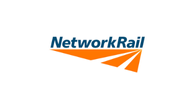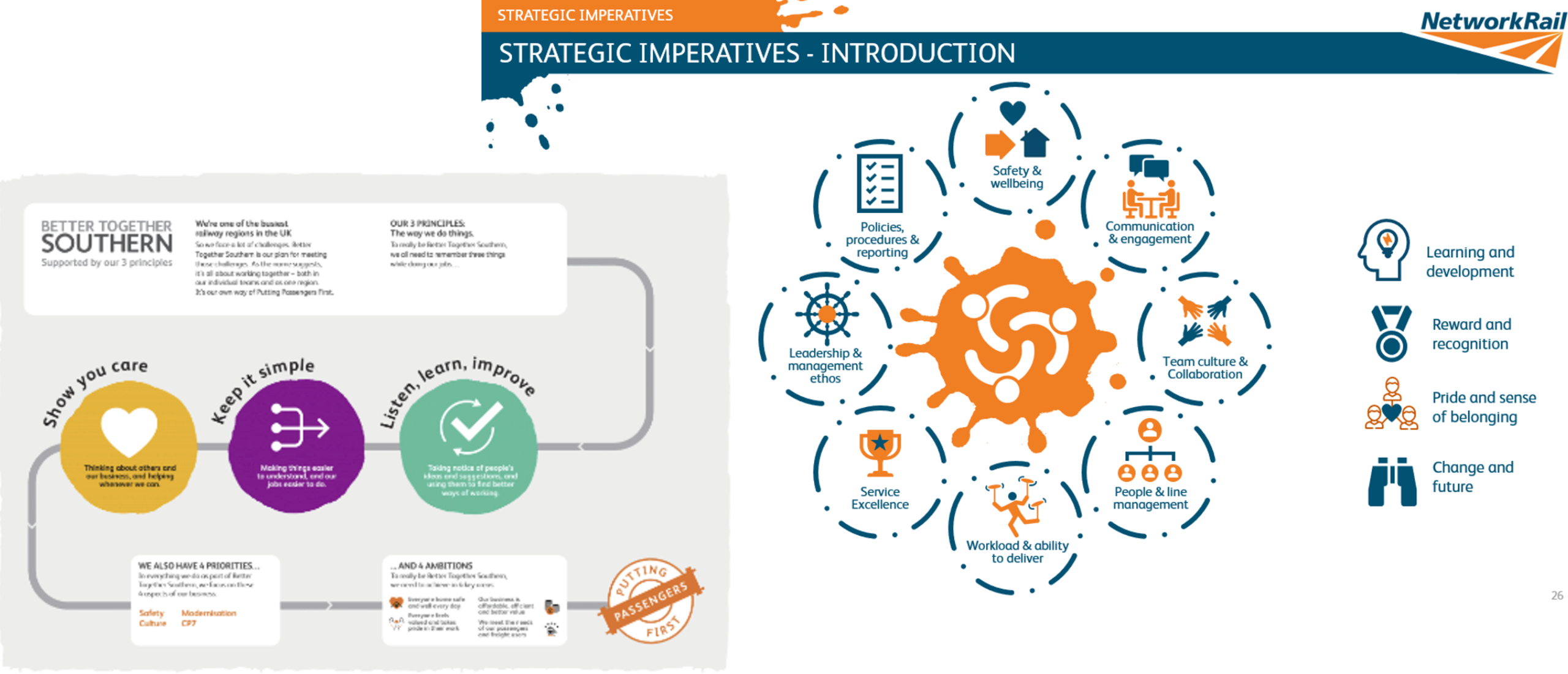
CAse study - Network Rail
Network Rail (Southern Region) manage over 7,000 trains daily, representing over a third of Britain’s rail services. They operate major stations such as Waterloo, Clapham Junction, London Bridge, Charing Cross, and maintain an extensive infrastructure, including 3,300 miles of track, nearly 5,000 bridges, 895 level crossings, and approximately 8,000 railway signals.
more likely to recommend MAB as a place to work
improvement to communication (internal NPS)
of employees feel they fully understand the Mission, Vision and DNA
at the Business Culture Leadership Award
Despite significant investment in safety policies, processes and training over a period of time, the Executive team of Network Rail (Southern Region) still believed their workforce were experiencing too many safety incidents and accidents, or near misses.
This raised concerns around the organisational culture and how it may be influencing employee actions, behaviours and decision making, and ultimately impacting employee safety and well-being.
To add to the complexity:
We were asked to help them look at the attributes and characteristics of their current culture, and pursue a radical culture transformation to improve safety, performance and employee satisfaction.


We applied our award-winning 3-stage culture change methodology as a foundation. We tailored the methodology to the client’s needs throughout the process to ensure we could deliver a unique future proof culture for Network Rail (SR).

Delivered through our award-winning 3-stage methodology:
Understanding & assessing the existing culture, challenges & opportunities
Designing the future culture
Embedding a culture of safety and making that new culture stick
Colleague engagement remained stable despite challenges


Culture Consultancy challenged our norms and assumptions whilst being pragmatic and progressive. Their human approach resulted in mindset shifts and behaviour from front line to Executives. Culture Consultancy, a partner that were a pleasure to work with.
Chief of Staff, Network Rail
Making
Complexity
Simple.
Case studies
Why us?